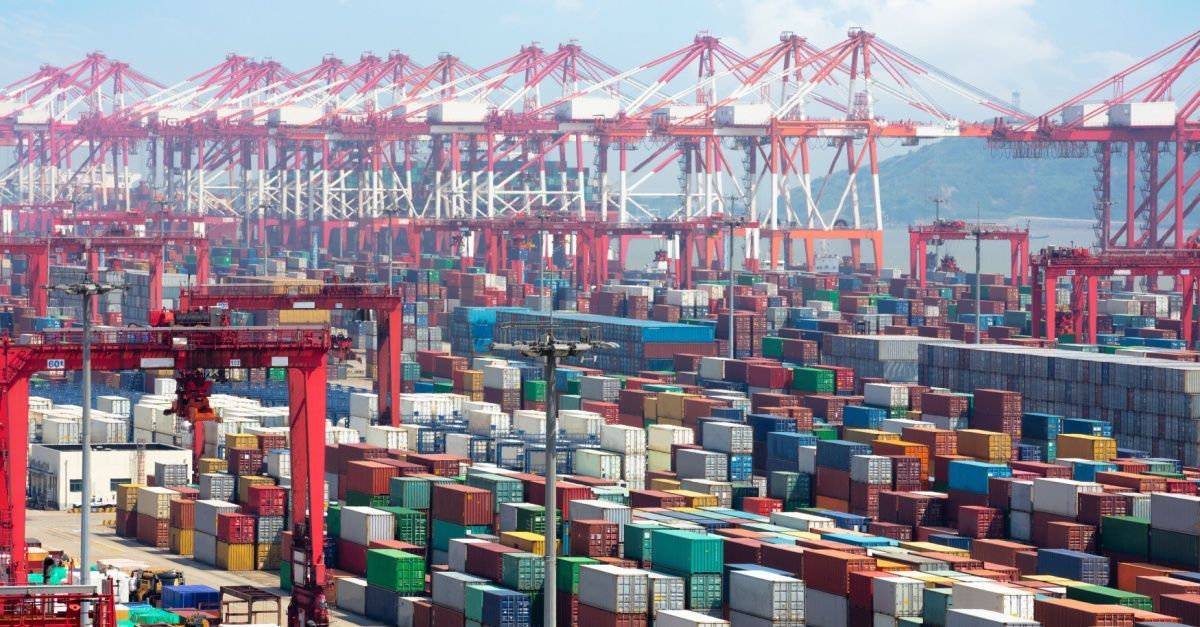LTL Carriers Gear Up for Growth Amid Revised Trucking Payroll Data
Blog Post CTA
LTL carriers are building terminals and adding lanes to be ready for a freight rebound expected later this year. These carriers are also bracing for future market shifts, including changes like the upcoming FedEx Freight spinoff and a potential LTL move by Amazon.
Meanwhile, employment figures for February revealed that trucking employment has been over-reported by 2% to 4% since 2022. Revised data now places the number of trucking employees at about 1.49 million, below the levels seen prior to the pandemic in 2019.
Continue reading to stay abreast of the latest news and trends happening across the industry.
LTL Carriers Gear Up for Growth
The current freight demand in the U.S. is weak. However, less-than-truckload carriers continue to expand their capacity and infrastructure. They are building terminals and adding lanes even when shipments fall short. The idea behind the continued push for expansion is that LTL companies are setting up to move quickly when freight picks up later this year.
Some carriers, like Roadrunner, have added hundreds of lanes to reach shippers faster. Other firms are investing in service centers to boost next-day and same-day service. Executives say the usual March peak is missing, and recent shipment numbers are down for many top carriers. However, they are hoping that capacity will tighten and trigger higher rates.
They are also preparing for future shifts in the market, including changes like the upcoming FedEx Freight spinoff and a possible LTL move by Amazon, which could add more capacity and impact freight prices further.
Revised Data Signals Shift to Smaller Carriers
U.S. employment data for February revealed a larger-than-expected shortfall in trucking employment, throwing light on a structural change in the U.S. trucking market.
The shortfall implies that, at least at larger carriers, truckload capacity could quickly tighten when demand rises. It also underscores a shift in employment from larger carriers to smaller trucking firms, a shift that may be permanent. Larger truckload carriers have cut capacity, while the number of small carriers has grown by 35% compared to pre-2020 figures.
This shift means more drivers now work for smaller firms, a change that may be permanent. The new data suggests that truckload capacity could tighten more quickly when demand rises. Shippers report that capacity remains available, and pricing is increasing only modestly. This change in employment distribution may have lasting effects on the trucking market as businesses plan for 2025 and beyond.
Trump Considers Targeted Reciprocal Tariffs
President Donald Trump indicated he is reviewing a new set of reciprocal tariffs set to be revealed April 2, which he calls “Liberation Day.” These tariffs aim to match those other countries impose on U.S. imports, but are expected to be narrower in scope than earlier proposals. Trump mentioned the possibility of offering some countries breaks, claiming that the U.S. has been generous in past dealings.
The plan calls for tariffs on any country that levies duties on U.S. goods.
Treasury officials pointed to 15 nations known for unfair trade practices, including Australia, Brazil, Canada, China, the EU, India, Japan, South Korea, Mexico, Russia, and Vietnam. Additional tariffs may target such goods as aluminum, lumber, pharmaceuticals, and semiconductors. A 25% tariff also will apply to imports from any nation purchasing oil or gas from Venezuela.
Tariffs, Rising Prices Spark Growing Inflation Fears
Consumer expectations for inflation over the next year have risen to 6.2% from 5.8% in February. Many point to high prices on basic items like eggs and the effect of tariffs as key factors. A University of Michigan survey shows that inflation expectations have climbed the fastest since 1993.
Fed Chair Jerome Powell noted that long-term expectations remain steady, even as short-term concerns grow.
Officials now expect core inflation to end the year at 2.8%. Federal Reserve Board of Governors member Adriana Kugler said rising prices, partly tied to trade policies, add to the economic uncertainty felt by consumers.
Retailers Stockpile Inventory to Beat Tariffs
Retailers are buying extra stock to lessen the impact of tariffs from the Trump administration. Stores from Costco to Williams-Sonoma and Zumiezare placing unusually large orders for items ranging from kitchenware to sneakers. They hope that by stockpiling now, they can avoid higher costs later.
While this approach acts as a buffer against rising tariffs, it also exposes companies to the risk of holding unsold goods if consumer spending slows. The strategy comes amid ongoing changes in inventory management since the pandemic, with many businesses shifting from a lean, just-in-time approach to a more cautious, just-in-case method.
Other factors, like potential port strikes and factory shutdowns during the Lunar New Year, have also pushed retailers to pull orders forward. While the tactic may protect margins in the short term, it leaves companies vulnerable if demand weakens.
Trump Imposes 25% Tariff on Foreign-Made Vehicles
President Trump signed an order toimpose a 25% tariff on all automotive vehicles produced outside the U.S. The tariff goes into effect April 2 and applies to a wide range of imported vehicles and parts, including engines, transmissions, and electrical components. Parts made in the U.S. will not be taxed if the vehicle is foreign-made.
Importers under the USMCA can certify their U.S. content to limit the tariff to only non-U.S. portions, with full application for parts by May 3. Automakers had seen a pause in tariffs after discussions with major companies like General Motors, Ford, and Stellantis. The new measure raises concerns among automakers and parts suppliers, especially since a large share of U.S. vehicle imports comes from
Mexico and Canada, prompting further U.S. capacity investments.
Proposed Port Fees Risk Disrupting Shipping
The U.S. Trade Representative is holding hearings on proposed fees that could hit Chinese-operated cargo ships with charges up to $1.5 million per call. The fees aim to boost U.S. shipbuilding and counter practices by China, which now leads in shipbuilding.
However, critics warn that many U.S. carriers, heavily reliant on Chinese-built vessels, may face steep financial and operational challenges. Atlantic Container Line warned that if the fees take effect, it could shut down its U.S. service, forcing job cuts and shifting trade routes.
Other stakeholders, including manufacturers and unions, express concern that these fees will reduce cargo capacity, drive up export costs, and hurt U.S. competitiveness in global trade.
Navigate Market with Entourage Freight Solutions
Entourage Freight Solutions stands out with its extensive background and expertise in food service logistics. Our unique approach, honed in the food supply chain, ensures an unmatched service level and extreme attention to detail in meeting all our shippers’ needs.
We can achieve a higher service level on all movements by approaching every shipment, whether shelf-stable or not, with the same care and consideration as the regulation-laden food supply chain industry. We also leave nothing to chance, tracking all legs of transportation and driver activity to maximize available capacity without sacrificing quality.
Our platforms use the latest cloud-based, GPS-enabled technologies. They can track drivers regardless of location, continuously reroute shipments based on the dynamics at play, such as weather or traffic, and account for real-time changes in market rates. At Entourage Freight Solutions, we offer a broad range of unsurpassed services. These include:
1. Full Truckload (FTL): For shipments requiring a dedicated whole truckload.
2. Less-than-truckload (LTL): For companies moving multiple shipments to different locations or consolidating goods from other companies to get a lower all-in rate.
3. Refrigerated Trucking or “Reefer” Transportation: Leveraged to avoid spoilage and damage to temperature-sensitive goods.
4. Cross-Docking: With locations in Shelby, Ohio, Cedar Rapids, Iowa, and Romulus, Michigan, that serve as cross-docks for strategic consolidation, storage, and end-to-end distribution programs.
Request a quote today to see how Entourage Freight Solutions can help with your freight movement and other supply chain needs.









